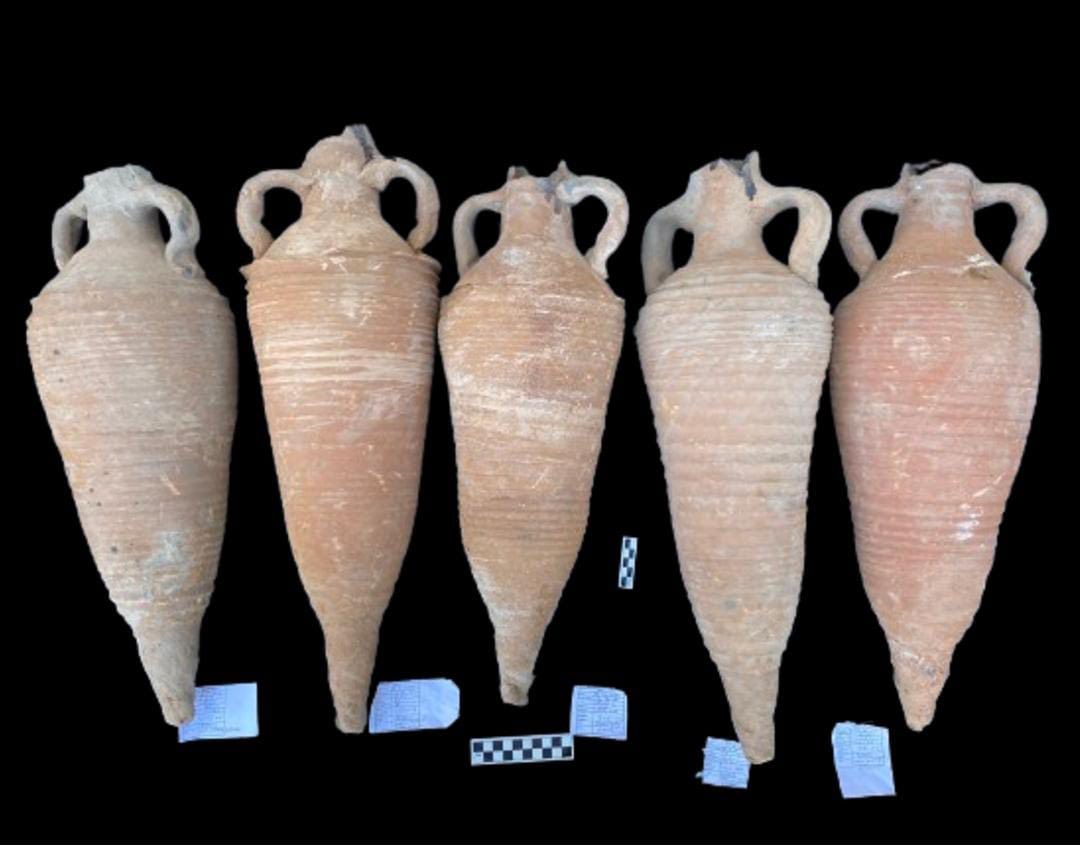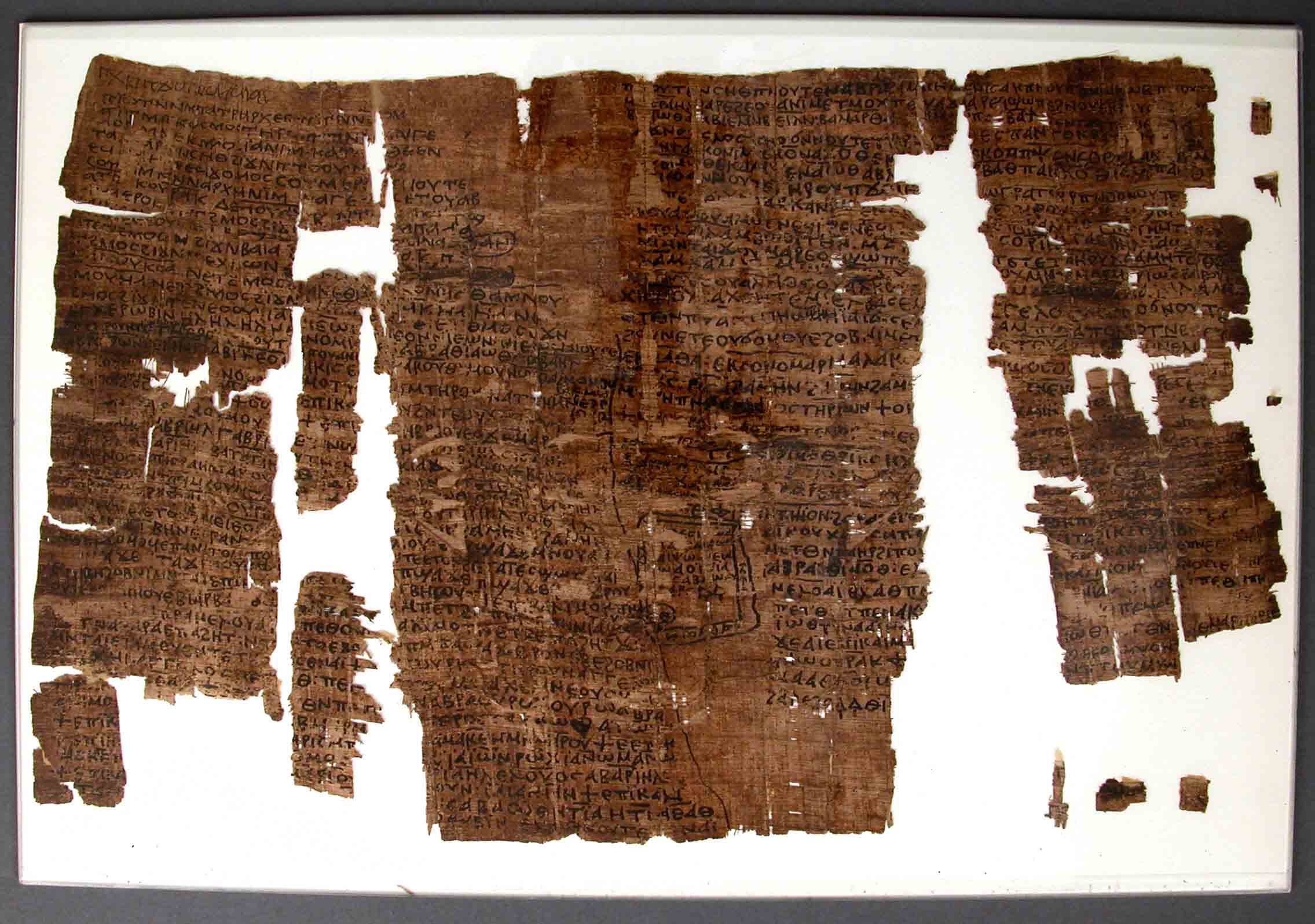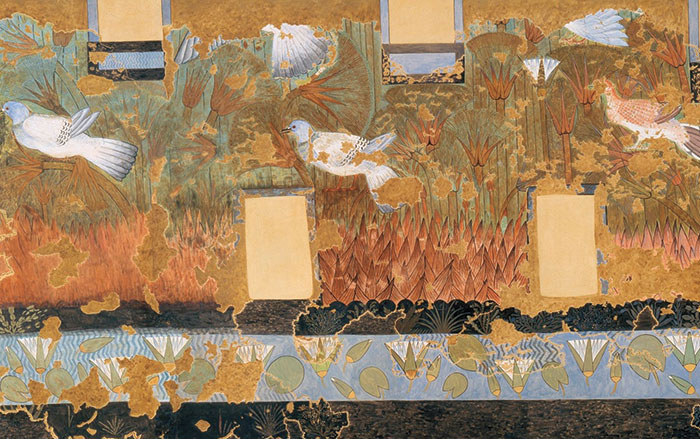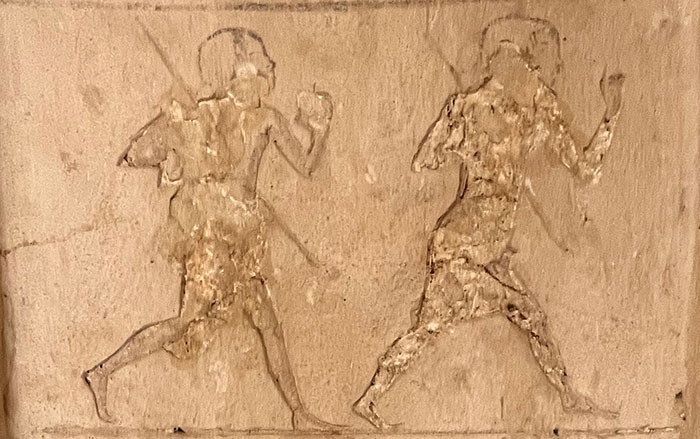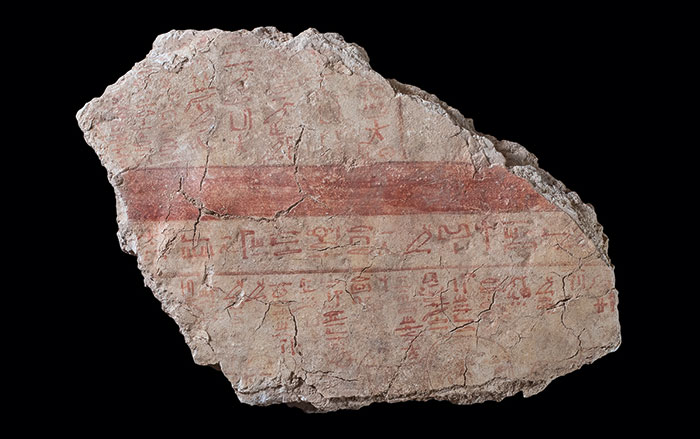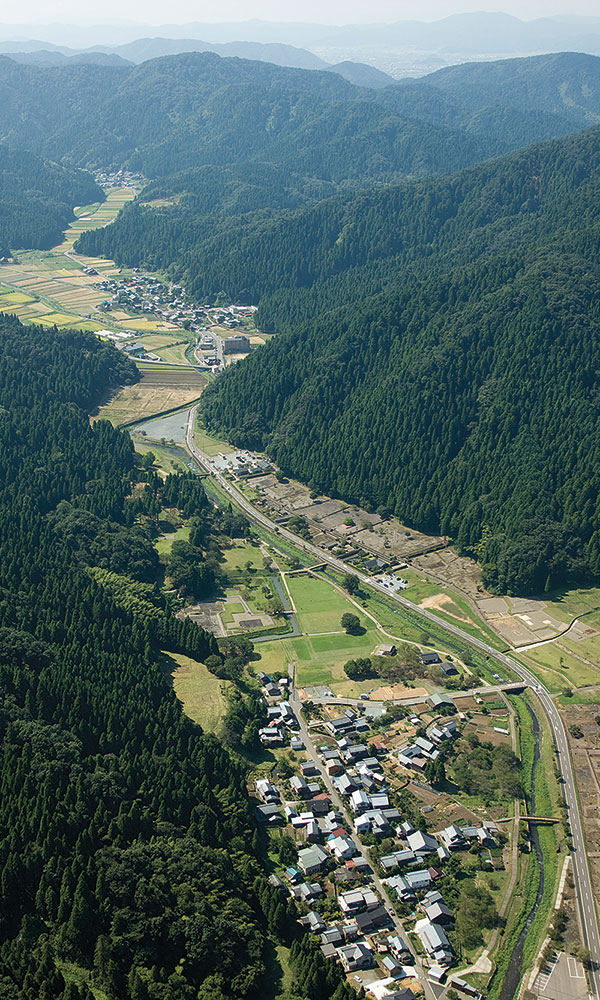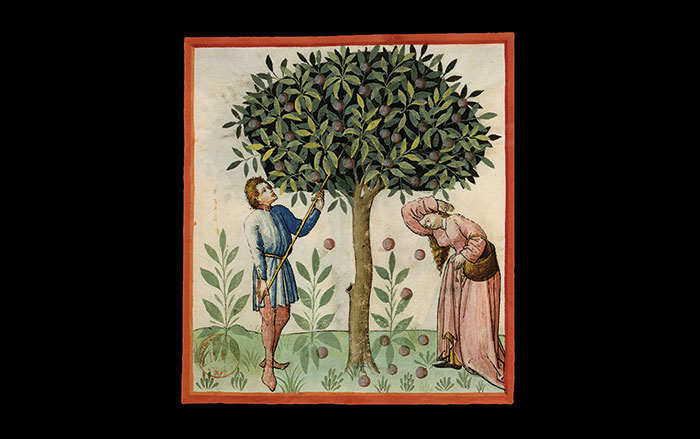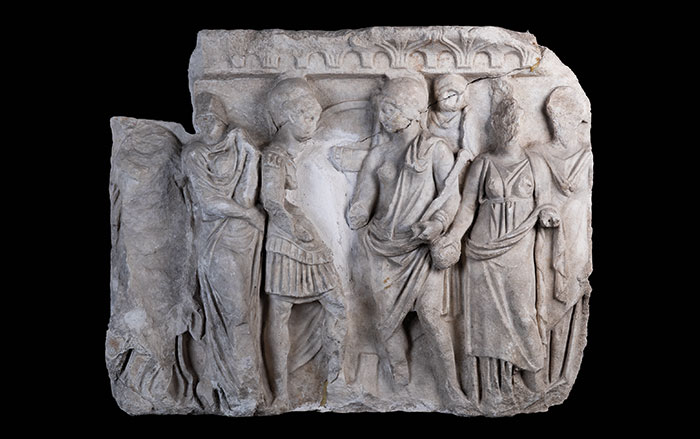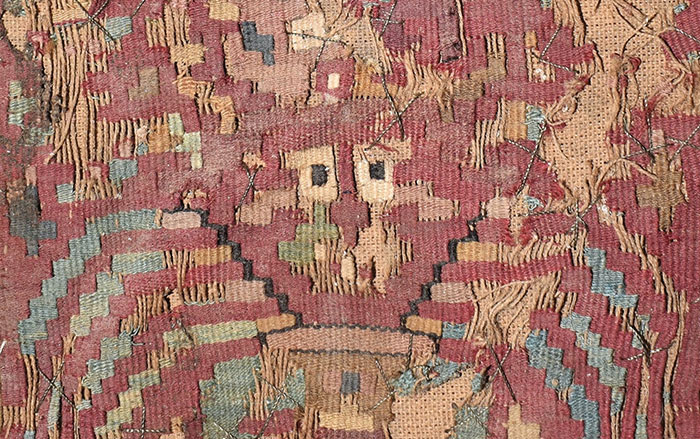
ASSIUT, EGYPT—The Egyptian Gazette reports that an archaeological mission working in Manqabad near Assiut unearthed the remains of a unique Coptic-period building. The walls of the two-story mudbrick structure, which dates to the sixth or seventh century a.d., were covered with remarkable murals. One room was painted with a series of eyes that were centered around a single human face. Researchers believe that this design symbolizes spiritual insight, wisdom, and inner vision, which were key themes of Coptic religious life. Another fresco bears the image of a bearded man holding a small child, likely representing Saint Joseph and an infant Jesus Christ. Other notable finds at the site include a variety of ceramics, some which contain Coptic lettering, a stone frieze decorated with the images of a lion and a deer, and a tombstone inscribed with the name and date of death of a venerated local saint. Egyptian authorities hailed the new discovery as an important addition to the understanding of Coptic and early Christian art and architecture in Upper Egypt. To read about a prayer written on a Coptic papyrus unearthed in Lower Egypt, go to "Divine Invitation."


